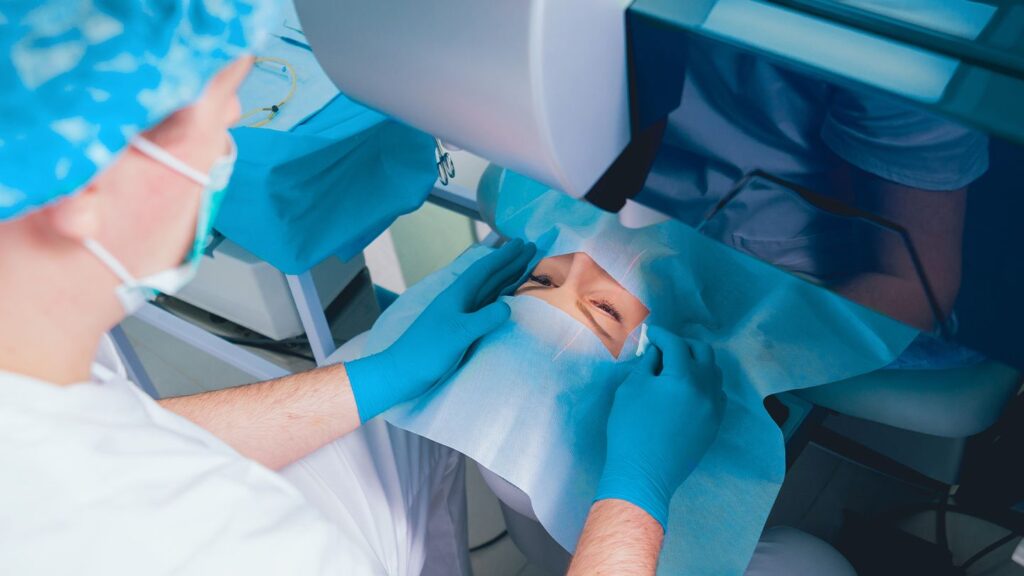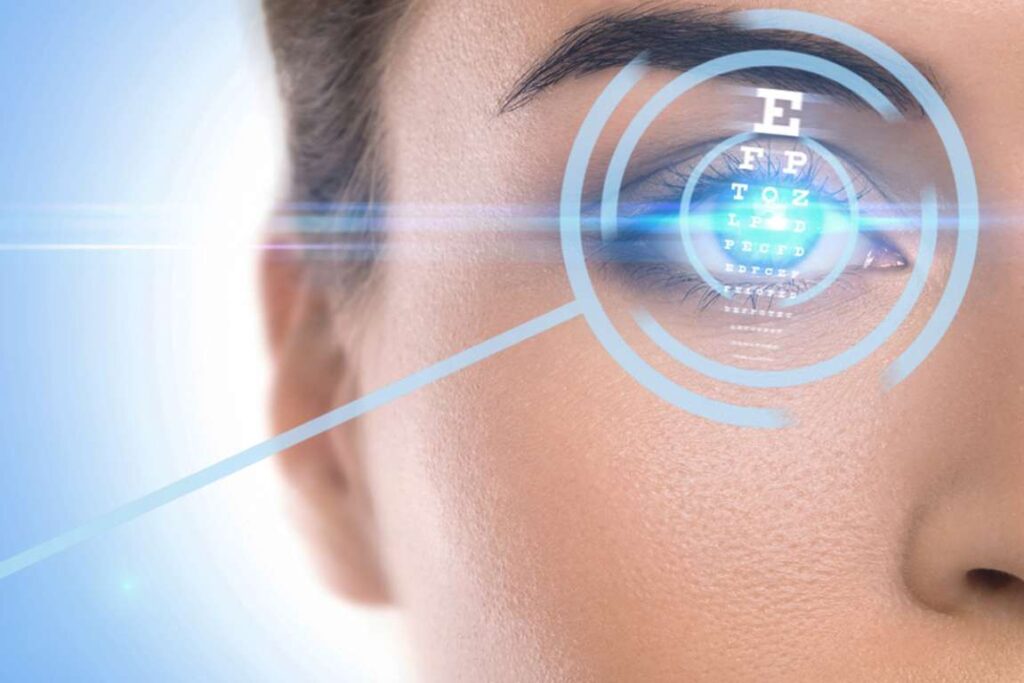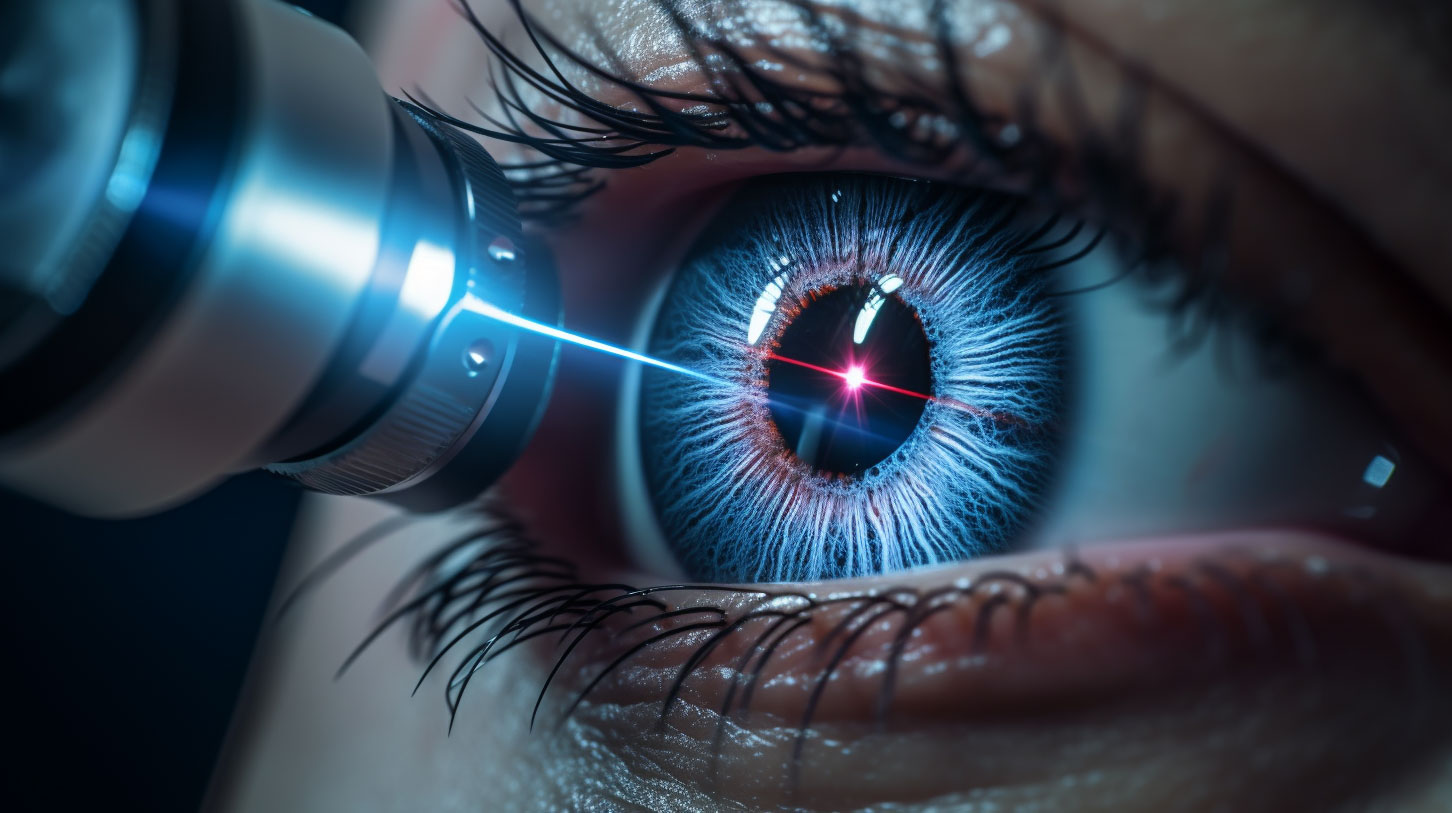In recent years, LASIK eye surgery has gained popularity as a revolutionary procedure for correcting vision. With its promise of improved eyesight and reduced reliance on glasses or contact lenses, LASIK has become a viable option for those seeking to enhance their visual acuity. However, like any medical procedure, LASIK is not without its pros and cons.
In this article, we will delve into the various facets of eye surgery lasik to help you make an informed decision about whether it is the right choice for you.
Understanding LASIK Eye Surgery
LASIK, which stands for Laser-Assisted In Situ Keratomileusis, is a refractive surgery that reshapes the cornea to correct common vision problems such as nearsightedness, farsightedness, and astigmatism. By using laser technology, LASIK adjusts the curvature of the cornea so that light entering the eye focuses correctly on the retina, resulting in clearer vision.
When it comes to vision correction, LASIK has become one of the most popular and effective procedures available today. With its ability to provide immediate results and minimal discomfort, it has transformed the lives of millions of people around the world.

The Science Behind LASIK
LASIK works by creating a thin flap on the surface of the cornea, which is then lifted to expose the underlying corneal tissue. This flap creation is done using a microkeratome or a femtosecond laser, depending on the surgeon’s preference and the patient’s specific needs. Click here to read more about steps to ensure a smooth LASIK procedure.
Once the flap is lifted, an excimer laser is used to precisely reshape the cornea according to the patient’s specific prescription. The excimer laser emits a cool ultraviolet light beam that removes microscopic amounts of tissue from the cornea, allowing for the desired reshaping. This process is known as ablation.
After the cornea has been reshaped, the flap is carefully repositioned, covering the treated area. The natural suction of the cornea holds the flap in place, eliminating the need for stitches. Over time, the flap adheres securely to the underlying corneal tissue, promoting proper healing.
The entire LASIK procedure usually takes less than 30 minutes, with the actual laser treatment lasting only a few seconds. The quickness of the procedure, combined with the use of numbing eye drops, ensures that patients experience minimal discomfort during the surgery.
The LASIK Procedure: What to Expect
Prior to undergoing LASIK, you will have a comprehensive eye examination to determine your eligibility for the procedure. This examination includes various tests to evaluate the health of your eyes, measure your refractive error, and assess the thickness and shape of your cornea.
During the surgery itself, you will be given numbing eye drops to ensure your comfort. These drops work by temporarily numbing the surface of the eye, preventing any pain or discomfort during the procedure. In some cases, a mild sedative may also be given to help you relax.
Once you are prepared for the surgery, you will be positioned under the laser machine. A small device called a lid speculum will be used to hold your eyelids open, preventing you from blinking. This may feel slightly uncomfortable, but it is necessary to ensure the accuracy of the laser treatment.
Most patients report feeling only slight pressure during the procedure, but no pain. The laser itself emits a clicking sound and you may notice a faint smell, which is completely normal. Throughout the procedure, your surgeon will communicate with you, letting you know what to expect and providing reassurance.
After the surgery, you may experience temporary dryness, itchiness, or sensitivity to light, but these symptoms usually subside within a few days. Your surgeon will provide you with specific instructions on how to care for your eyes during the healing process, including the use of prescribed eye drops and avoiding activities that may strain your eyes.
It’s important to note that while LASIK has a high success rate, individual results may vary. Some patients may still require the use of glasses or contact lenses for certain activities, such as reading or driving at night. Your surgeon will discuss these possibilities with you during your consultation.
Overall, LASIK is a safe and effective procedure that has helped millions of people achieve clearer vision and reduce their dependence on corrective eyewear. If you are considering LASIK, it is important to consult with a qualified eye surgeon who can evaluate your specific needs and determine if you are a suitable candidate for the procedure.

The Benefits of LASIK Eye Surgery
When considering LASIK eye surgery, it is important to weigh the benefits against the potential risks and complications. Fortunately, LASIK offers numerous advantages that have made it a popular choice among those seeking visual rehabilitation.
LASIK, which stands for Laser-Assisted In Situ Keratomileusis, is a surgical procedure that uses a laser to reshape the cornea, improving vision and reducing the need for glasses or contact lenses. This innovative procedure has revolutionized the field of ophthalmology and has transformed the lives of millions of people around the world.
Improved Vision Quality
One of the primary benefits of LASIK is the significant improvement in vision quality it provides. Many patients achieve 20/20 vision or better following the procedure, allowing them to enjoy activities such as driving, reading, and participating in sports without the need for corrective eyewear.
Imagine being able to see the world with crystal-clear vision, experiencing vibrant colors and sharp details. LASIK can correct common vision problems such as nearsightedness, farsightedness, and astigmatism, giving you the freedom to fully appreciate the beauty of your surroundings.
Long-Term Cost Benefits
While LASIK may initially seem expensive, it can be a cost-effective solution in the long run. By eliminating the need for glasses or contacts, LASIK can save you money on prescription lenses, frames, contact lens solutions, and regular eye exams.
Consider the expenses associated with traditional vision correction methods. Over time, the costs of purchasing new glasses or contacts, replacing lost or damaged eyewear, and maintaining your eye health can add up significantly. LASIK offers a one-time investment that can provide lasting visual improvement, potentially saving you money in the long term.
Lifestyle Advantages
LASIK can enhance your overall quality of life by freeing you from the hassles of glasses and contacts. Imagine waking up in the morning with clear vision and being able to engage in activities spontaneously without the need to search for misplaced glasses or worry about broken frames.
With LASIK, you can say goodbye to the inconvenience of cleaning, storing, and maintaining contact lenses. No more worrying about running out of contact lens solution or dealing with dry, irritated eyes. LASIK allows you to enjoy the freedom of clear vision without the daily hassle of glasses or contacts.
Furthermore, LASIK can open up new possibilities for outdoor activities and sports. Whether you enjoy swimming, hiking, or playing basketball, LASIK can give you the confidence to participate fully without the fear of losing or damaging your glasses or contacts.
In conclusion, LASIK eye surgery offers a multitude of benefits that can significantly improve your quality of life. From enhanced vision quality to long-term cost savings and lifestyle advantages, LASIK has the potential to transform your visual experience and liberate you from the limitations of traditional vision correction methods.
Potential Risks and Complications of LASIK
While LASIK offers many benefits, it is essential to be aware of the potential risks and complications associated with the procedure. Understanding these risks can help you make an informed decision about whether LASIK is the right choice for you.
LASIK is a safe and effective procedure for most people, but like any surgical procedure, it does carry some risks. It is important to discuss these risks with your surgeon and thoroughly understand the potential complications before undergoing LASIK.
Short-Term Side Effects
Following LASIK, it is common to experience temporary side effects such as dry eyes, light sensitivity, and glare. These side effects are usually mild and resolve on their own within a few days or weeks as the cornea heals. However, it is crucial to follow the post-operative care instructions provided by your surgeon to minimize any discomfort and ensure a smooth recovery.
Dry eyes are a common side effect of LASIK and can cause temporary discomfort. Your surgeon may recommend using artificial tears or other lubricating eye drops to alleviate dryness and promote healing. It is important to avoid rubbing your eyes during the healing process to prevent any complications.
Light sensitivity is another short-term side effect that some patients may experience after LASIK. This sensitivity to light can make it uncomfortable to be in bright environments or expose your eyes to direct sunlight. Wearing sunglasses and avoiding bright lights can help alleviate this sensitivity until it subsides.
Glare is another common side effect that can occur after LASIK. It may cause difficulty seeing clearly in certain lighting conditions, especially at night. This glare can be caused by the reshaping of the cornea during the procedure. In most cases, this symptom improves over time as your eyes adjust to the changes made during LASIK.
Long-Term Risks
Although rare, some individuals may experience long-term complications after LASIK. These complications can include glare, halos, or difficulty seeing at night. It is essential to discuss these potential risks with your surgeon and understand the likelihood of experiencing such complications based on your individual circumstances.
Glare and halos are visual disturbances that can affect your vision quality, especially in low-light conditions. These symptoms can make it challenging to drive at night or perform tasks that require clear vision. While these complications are rare, it is important to discuss them with your surgeon to understand the potential impact on your daily life.
Difficulty seeing at night is another long-term risk that some individuals may experience after LASIK. This can manifest as reduced clarity or increased sensitivity to light in low-light environments. Your surgeon will evaluate your individual risk factors for this complication and discuss the likelihood of experiencing it after LASIK.
It is important to remember that while these risks exist, the majority of LASIK patients experience significant improvement in their vision and are satisfied with the results. Your surgeon will carefully evaluate your eye health and discuss any potential risks or complications specific to your situation before proceeding with LASIK.

Factors to Consider Before Undergoing LASIK
Before deciding whether to undergo LASIK eye surgery, there are several factors you should take into consideration.
Eligibility for LASIK
Not everyone is a suitable candidate for LASIK. Your eye health, prescription, and overall health must be evaluated by an experienced ophthalmologist or optometrist to determine if LASIK is a safe and suitable option for you.
Choosing the Right Surgeon
The success and safety of LASIK largely depend on the skill and experience of the surgeon performing the procedure. It is crucial to research and choose a surgeon who is board-certified, highly skilled, and reputable in the field of refractive surgery.
An initial consultation with the surgeon can help you assess their expertise and ensure that you are comfortable with their approach to LASIK.
Financial Considerations
The cost of LASIK eye surgery varies depending on several factors, including the surgeon’s experience, the technology used, and the geographical location of the clinic. Take the time to understand the costs involved and explore any financing options or insurance coverage that may be available to you.
Alternatives to LASIK Eye Surgery
While LASIK is a popular and successful procedure, it may not be the right choice for everyone. Fortunately, there are alternative treatments available that can address your vision concerns.
PRK: An Older but Reliable Method
Photorefractive Keratectomy (PRK) is another laser eye surgery that aims to correct vision by reshaping the cornea. Although it involves a slightly longer recovery time compared to LASIK, PRK may be a suitable alternative for individuals with thin corneas or other factors that make them ineligible for LASIK.
Implantable Contact Lenses: A Permanent Solution
For those seeking a long-term solution without undergoing surgery, implantable contact lenses may be an option worth exploring. These lenses are surgically inserted into the eye to correct vision, offering similar benefits to LASIK but with the advantage of being reversible.
Orthokeratology: A Non-Surgical Option
Orthokeratology, also known as Ortho-K, utilizes specially designed contact lenses worn overnight to temporarily reshape the cornea. This non-permanent solution can provide clear vision during the day without the need for glasses or contacts.
When considering LASIK eye surgery, it is essential to weigh the pros and cons, thoroughly research the procedure, and consult with qualified eye care professionals to make an informed decision about your vision correction options. Only by understanding the potential benefits, risks, and alternatives can you make the best choice for your long-term visual health.

